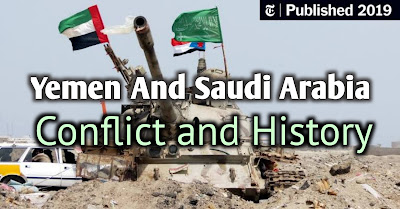Yemen and Saudi Arabia Conflict History
The conflict between Yemen and Saudi Arabia is a complex and multifaceted conflict with significant regional implications. Here's an overview of the key factors and dynamics:
**Background:**
1. **Houthi Rebellion:**
The conflict began in 2014 when Houthi rebels, a Shia insurgent group aligned with Iran, seized control of the Yemeni capital, Sana'a, and ousted the internationally recognized government of President Abdrabbuh Mansur Hadi.
2. **Saudi Intervention:**
In March 2015, a coalition of Arab states led by Saudi Arabia launched a military intervention in Yemen in support of President Hadi's government. The coalition's stated goal was to restore Hadi's government to power and counter Iranian influence in Yemen.
**Key Issues:**
1. **Proxy Conflict:**
The conflict in Yemen is often viewed as a proxy war between Saudi Arabia and Iran, two regional rivals competing for influence in the Middle East. Iran has provided support to the Houthi rebels, including weapons, training, and financial assistance, while Saudi Arabia leads a coalition of Arab states backing the Yemeni government.
2. **Humanitarian Crisis:**
The conflict has had devastating humanitarian consequences, with Yemen facing one of the world's worst humanitarian crises. The ongoing fighting, airstrikes, and blockade have resulted in widespread death and suffering, food and medicine shortages, and the displacement of millions of people.
3. **War Crimes Allegations:**
Both sides have been accused of committing war crimes and violating international humanitarian law. The Saudi-led coalition has faced criticism for airstrikes that have hit civilian targets, including schools, hospitals, and residential areas, while Houthi forces have been accused of indiscriminate shelling and the use of child soldiers.
4. **Political Stalemate:**
Despite numerous attempts at peace talks and diplomatic initiatives, the conflict in Yemen remains deadlocked, with neither side able to achieve a decisive military victory. Efforts to reach a negotiated settlement have been hindered by deep-seated mistrust, conflicting interests, and the fragmentation of Yemeni society.
**International Involvement:**
1. **United Nations:**
The United Nations has been actively involved in efforts to broker a ceasefire and find a political solution to the conflict. The UN Security Council has called for an end to hostilities and the implementation of confidence-building measures, but progress has been slow and limited.
2. **Humanitarian Aid:**
The international community has provided humanitarian aid to Yemen to alleviate the suffering of civilians affected by the conflict. However, access to aid has been hampered by fighting, bureaucratic obstacles, and restrictions imposed by both sides.
Overall, the conflict in Yemen remains a protracted and devastating humanitarian crisis with far-reaching consequences for the people of Yemen and the broader region. Efforts to find a peaceful resolution to the conflict are essential to address the humanitarian crisis and prevent further suffering.




Comments
Post a Comment